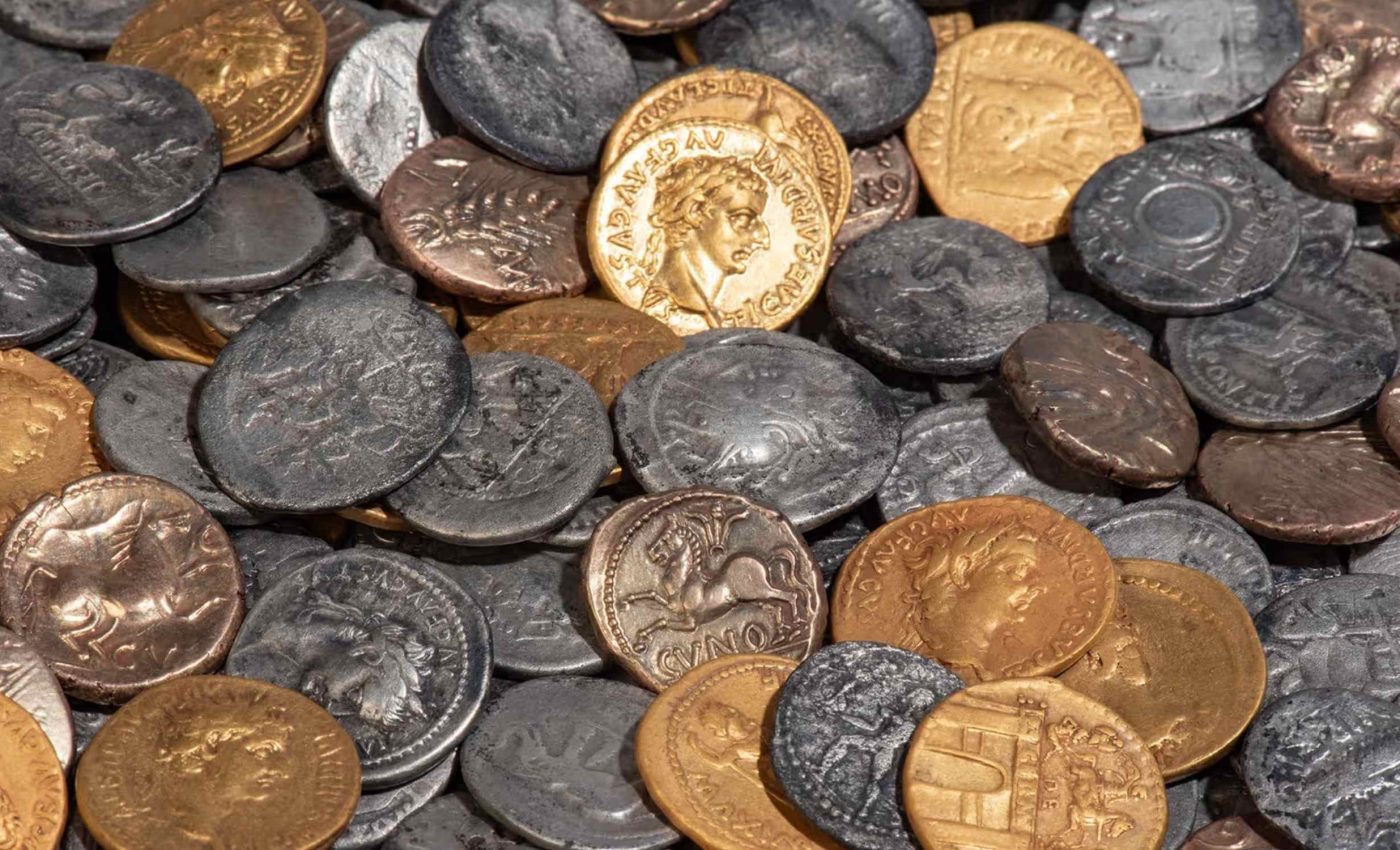
Friends with metal detectors discover a Roman treasure hoard lost for over 2,000 years
Two metal detectorists uncovered a Roman treasure hoard containing hundreds of ancient coins in a meadow near Bunnik, a town in the Dutch province of Utrecht. The cache dates to the years around the Roman invasion of Britain under Emperor Claudius.
The find is remarkable because it blends Roman and British money in one stash. It also links a quiet Dutch field to events that reshaped life on both sides of the North Sea.
Importance of Roman hoards
The hoard is the first mixed Roman and British coin find recorded on the European mainland, and it is the largest Roman coin hoard found in Utrecht, according to a university-curated database.
Lead archaeologist Tessa de Groot of the Cultural Heritage Agency of the Netherlands (RCE) has guided fieldwork that explores why the coins were buried and who might have placed them there. Her team studied soils, vegetation clues, and the ancient landscape.
The hoard’s makeup points to soldiers moving between Britain and the Rhine frontier. It connects local history to a campaign that changed the map of northwestern Europe.
The total value equaled nearly eleven years of a typical Roman soldier’s pay, which hints at an owner with rank or a group pool of savings.
Details about the coins
The mix includes 44 British gold staters, 72 Roman gold aurei, and 288 Roman silver denarii, with minting dates from about 200 BC to AD 47, according to an initial analysis.
The denarii, small silver coins once used to pay soldiers and merchants, span several rulers of the Roman Republic and early Empire. Their wide range helps date the hoard and trace the flow of currency through military campaigns.
Among them are the aurei, heavy gold pieces reserved for major transactions and officer payments. Their abundance hints at a single owner of means rather than loose spending money scattered over time.
Then there are the staters, gold coins from British tribal kingdoms that connect the hoard to southeastern England. Many display the inscription CVNO and depict a horse paired with a grain ear, symbols of the king Cunobelinus’s reign.
Frontier that tied two shores
Bunnik sits along the Lower Germanic Limes, the Roman border corridor that followed the Rhine from Germany to the North Sea, a military zone formally recognized as World Heritage in 2021.
This frontier was not a hard wall. It worked as a road and river network that fed supplies forward and brought people back, including veterans and camp followers.
In AD 43, the general Aulus Plautius led the first phase of the conquest of Britain. Troops sent from the Rhine staging grounds crossed the North Sea, fought inland, and then returned with pay, gear, and souvenirs.
Why this Roman hoard was buried
Excavation and coring show the coins were buried in a wet spot along a small channel. The pit lay less than about 12 inches below the surface, then was disturbed by later plowing.
No jar fragments or wood survived. The evidence points to a cloth or leather pouch that rotted away. The coins probably sat in a shallow scoop in an open, boggy place.
Why hide so much value there? One idea is military pay saved for later by an officer. Another is a ritual offering after a safe return from Britain.
A donativum was a money gift sometimes given to soldiers after a campaign. This could explain the British staters. The Roman gold and silver likely came from regular pay.
The finders, Gert-Jan Messelaar and Reinier Koelink, reported the hoard to heritage officials and worked with archaeologists through the dig and documentation.
Visitors can see the coins in the National Museum of Antiquities in Leiden, in the permanent gallery called: “Netherlands in the Roman Era.”
Unraveling the story in the coins
Many emperors appear in the hoard, including Augustus, Tiberius, and Claudius. That span helps archaeologists date the burial to shortly after AD 47.
Two rulers outside Rome also matter here. From among the find, a silver coin bears the name Juba I, the North African ruler who became entangled in Rome’s civil wars. And various gold coins from Britain carry the name of Cunobelinus, the powerful king who ruled southeastern England for decades before his sons clashed with Rome.
The mix suggests coins traveled in campaign pay chests, in kit bags, and as loot. It captures the human side of war finance, from wages to windfalls.
This hoard is not a random loss. Instead, it records a choice made in a tense moment. The Bunnik hoard ties that choice to a frontier route and a short, violent window in British history.
Its careful recovery shows how amateurs and professionals can work together. Laws and reporting tools protect finds like this so that students and scholars can read their stories.
Beeld: RMO .
—–
Like what you read? Subscribe to our newsletter for engaging articles, exclusive content, and the latest updates.
Check us out on EarthSnap, a free app brought to you by Eric Ralls and Earth.com.
—–













